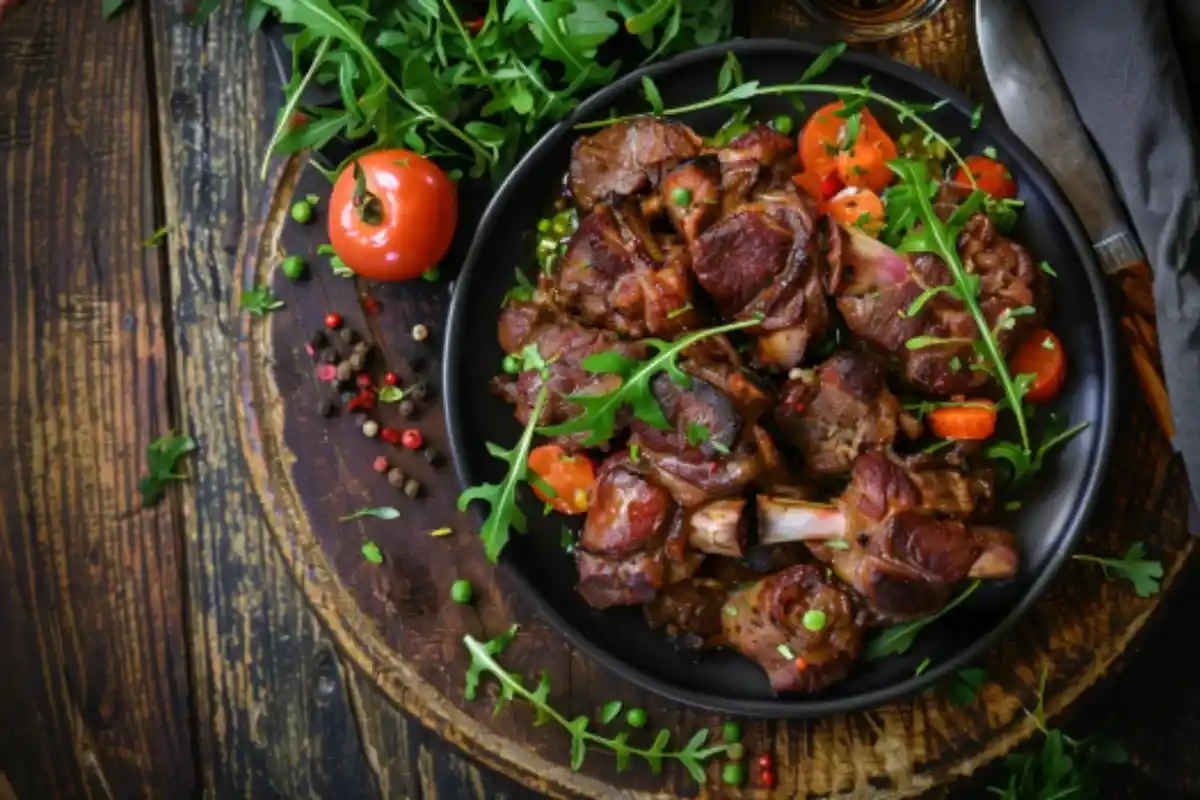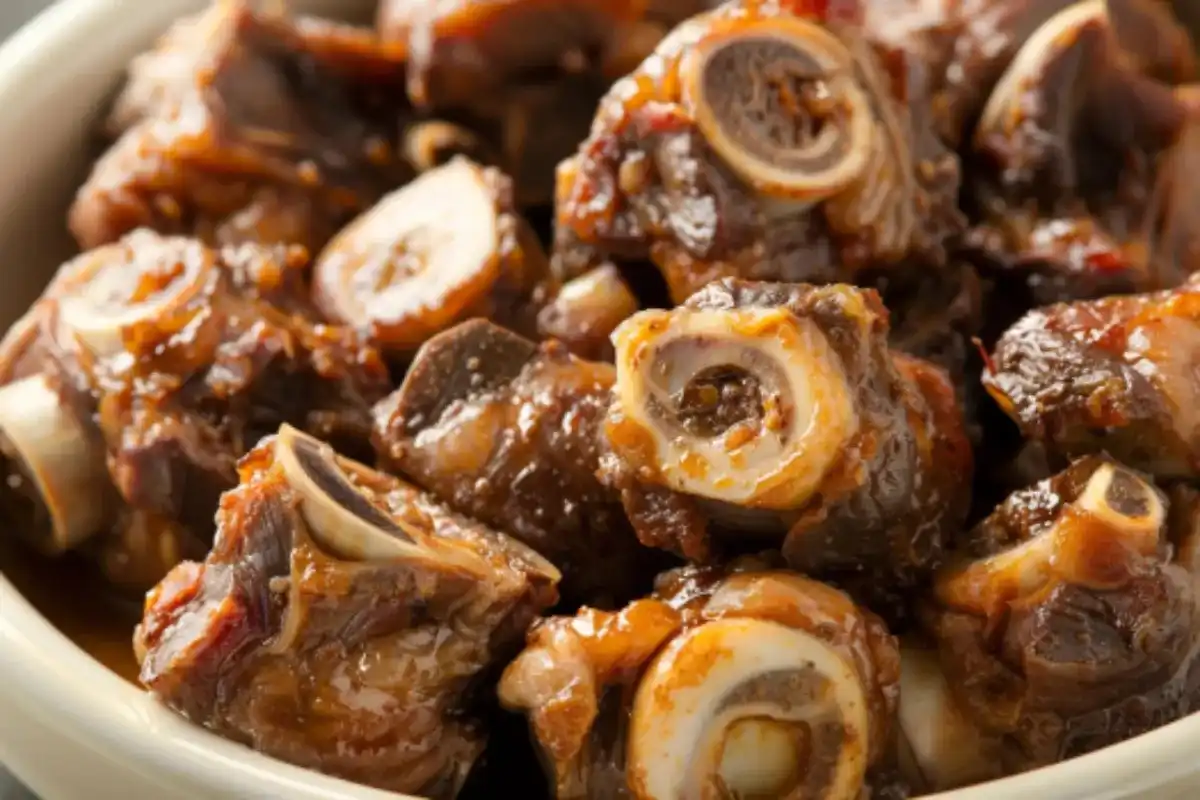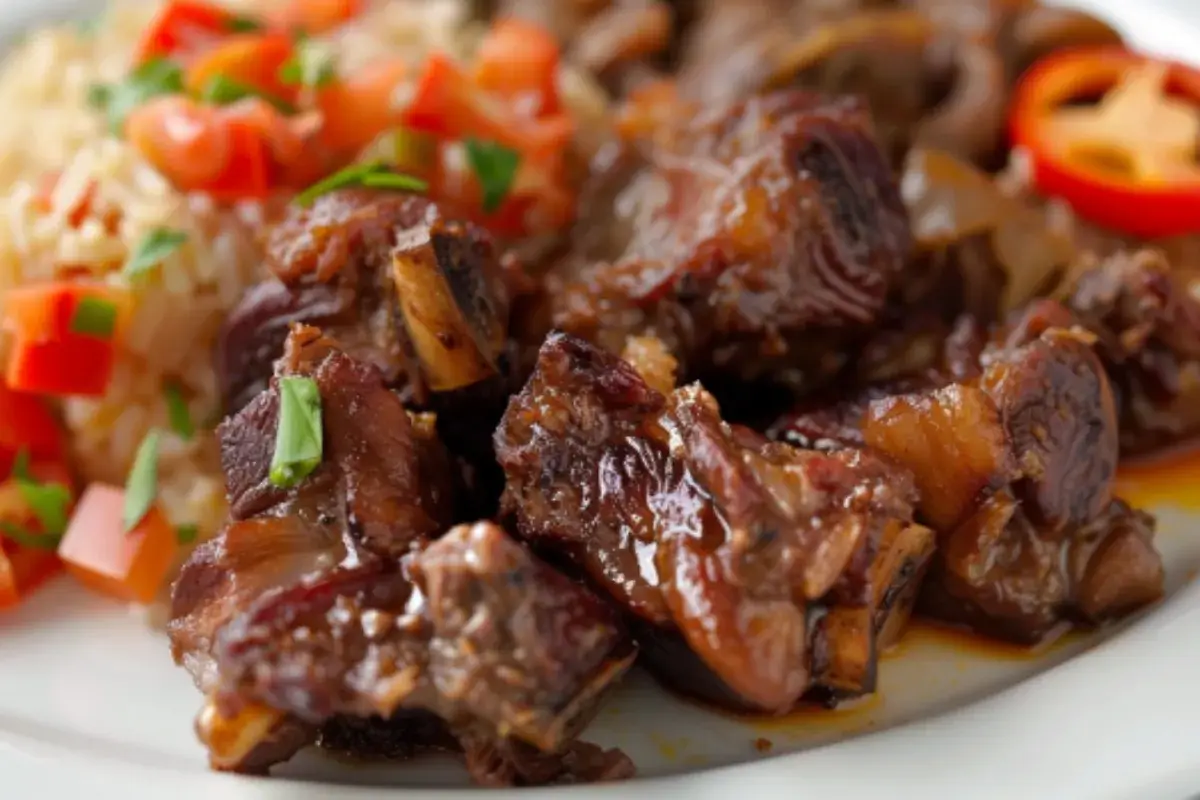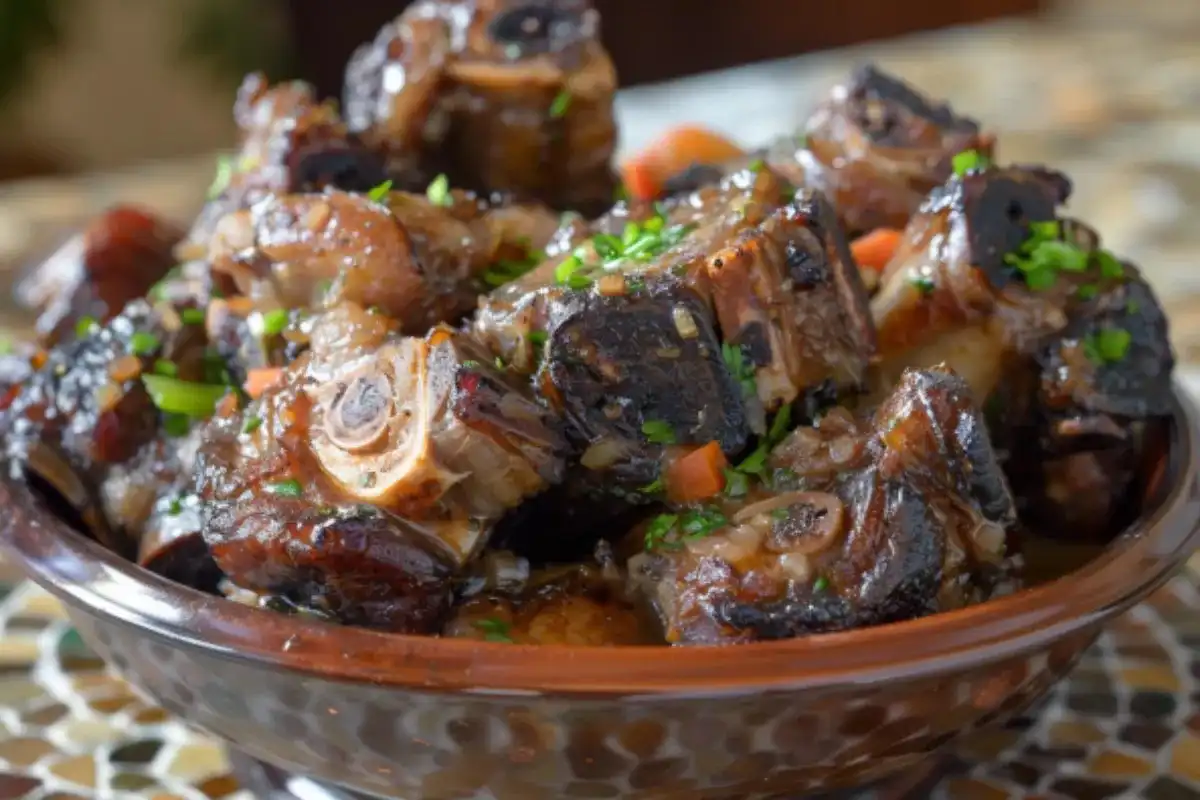When cooking oxtails, one of the most important decisions a cook must make is whether or not to brown the meat before it continues on to simmering, slow cooking, or braising. This question has divided chefs and home cooks alike, especially when it comes to saving time versus maximizing flavor. Browning meat, particularly in the case of oxtails, is often touted as a crucial step in the process to build a deep and rich flavor. But is it really necessary?
In this article, we will explore the significance of browning oxtails, the science behind the process, when it can be skipped, and the cultural and culinary traditions that revolve around this flavorful cut of meat. Whether you’re new to cooking oxtails or looking to refine your technique, this guide will provide you with all the information you need to make the best decision for your next meal.
What is Browning, and Why is It Important When Cooking Oxtails?

Browning refers to the process of searing meat at high heat until the surface takes on a deep, caramelized crust. This occurs due to the Maillard reaction, a chemical reaction between amino acids and reducing sugars that gives browned foods their distinctive flavor and color. To enhance the flavor, many chefs choose to brown oxtails before cooking. The Maillard reaction is central to cooking, creating complex flavors that are not possible through other methods such as boiling or steaming.
Browning isn’t just about aesthetics, though a beautifully browned piece of meat certainly looks more appealing than pale, boiled meat. The process fundamentally changes the flavor profile, enriching it with savory, nutty, and roasted notes that cannot be replicated by any other cooking method. This is why so many chefs emphasize browning as a key step in meat preparation, particularly for tough cuts like oxtails that benefit from long, slow cooking.
Benefits of Browning
- Flavor enhancement: Browning significantly boosts the flavor of the meat by creating layers of taste through caramelization.
- Texture development: The crisp exterior created during browning can enhance the texture of the final dish, adding a slight chewiness or crunch that contrasts with the tender, slow-cooked interior.
- Color: A well-browned piece of meat looks appetizing, with its deep, rich color suggesting complexity and depth of flavor.
While browning meat is a technique that has been used for centuries, its importance in modern cooking cannot be overstated. Understanding the Maillard reaction and its effects on food will help you make more informed decisions in the kitchen.
For a more detailed breakdown of the science behind browning meat, you can visit Serious Eats, which provides an in-depth explanation of the Maillard reaction and its role in flavor development.
The Maillard Reaction Explained
To fully appreciate why browning meat like oxtails is so beneficial, it’s helpful to understand what the Maillard reaction actually is. Named after French chemist Louis-Camille Maillard, this reaction occurs when heat causes amino acids and sugars in meat to interact, resulting in hundreds of new flavor compounds. Therefore, when you brown oxtails before cooking, you enhance the development of these complex flavors.
The Maillard reaction begins around 285°F (140°C), a temperature high enough to encourage the browning process but low enough to avoid burning. As the reaction proceeds, the surface of the meat transforms, developing complex flavors and aromas. This is why meat that has been seared or browned before cooking often tastes richer and more flavorful than meat that has been boiled or simmered without browning.
It’s worth noting that the Maillard reaction is different from caramelization, which involves the oxidation of sugars alone. The Maillard reaction is more complex, involving both proteins and sugars, which explains why it leads to deeper, more nuanced flavors.
When Should You Brown Oxtails?
Now that we’ve established the benefits of browning, the next question is: when is it necessary to brown oxtails? The answer depends largely on the recipe you’re following, the cooking method you’re using, and your personal preferences.
Traditional Recipes That Require Browning
Many traditional recipes, especially those for hearty stews and braised dishes, recommend that you brown oxtails before cooking. In these recipes, browning is often considered a non-negotiable step because of the deep flavor it imparts. For example:
- Jamaican oxtail stew: This dish is known for its rich, bold flavors, which are largely a result of browning the oxtails before they are slow-cooked with spices, herbs, and vegetables.
- Southern smothered oxtails: In the Southern United States, smothered oxtails are typically browned before being simmered in a flavorful gravy made from the pan drippings, onions, and seasonings.
- Italian osso buco: While osso buco is traditionally made with veal shanks, oxtails are sometimes used as a substitute. Browning the meat before braising in a broth of white wine, vegetables, and herbs is key to achieving the dish’s complex flavors.
In recipes like these, browning the oxtails adds both flavor and texture to the final dish, making it more satisfying and visually appealing. See more slow cooker recipes in this Slow Cooker Oxtail Recipes collection on Allrecipes.
Cooking Methods That Benefit From Browning
- Slow Cooking: When using a slow cooker, browning the oxtails beforehand can significantly boost the flavor of the final dish. The slow cooking process allows the meat to absorb the caramelized flavors from the browning, creating a rich and hearty stew.
- Pressure Cooking: Similar to slow cooking, browning before pressure cooking enhances the flavor of the meat and broth. Since pressure cooking can sometimes result in a more concentrated, intense flavor, browning helps balance the richness of the dish.
- Braising: This method involves first browning the meat and then slowly cooking it in a liquid (usually broth, wine, or water). Browning helps develop flavor, while the slow cooking process ensures the meat becomes tender and falls off the bone.
When Can You Skip Browning Oxtails Before Cooking?

While browning oxtails before cooking is often recommended, there are times when you can skip this step without sacrificing too much in terms of flavor or texture. For example:
- Time Constraints: Browning oxtails can be a time-consuming process, especially if you’re cooking a large batch. In some cases, skipping the browning step can save you 20 to 30 minutes of prep time, which might be worthwhile if you’re in a hurry.
- Clear Broths and Soups: If you’re making a clear oxtail soup or broth, browning might not be necessary. In fact, it could result in a cloudy broth, which may not be desirable for certain dishes. For these recipes, it’s often better to simply simmer the oxtails without browning them first.
- Lighter Dishes: If you’re making a lighter dish that doesn’t rely on deep, roasted flavors, you can skip the browning step. For example, a mild oxtail stew with herbs and white wine might not require the same level of caramelization as a hearty, tomato-based oxtail braise.
Even without browning, oxtails can still be incredibly flavorful, especially if you take the time to season the meat well and cook it slowly.
For an example of a lighter oxtail recipe that doesn’t require browning, check out this oxtail recipe guide, which includes tips for preparing oxtails without the extra step of searing.
How to Brown Oxtails Perfectly: A Step-by-Step Guide
If you’ve decided that browning your oxtails is the way to go, here’s a step-by-step guide to ensure you get the best results every time.
1. Choose the Right Pan
The first step in browning oxtails before cooking is selecting the right pan. A heavy-bottomed pan, such as a cast-iron skillet or Dutch oven, is ideal for browning because it retains heat well and allows for even cooking.
- Cast iron: Cast iron pans are particularly good for browning meat because they hold heat evenly and can reach high temperatures without warping.
- Stainless steel: Stainless steel pans also work well, but you’ll need to make sure they’re preheated properly to prevent sticking.
2. Preheat the Pan
Before adding any oil or meat to the pan, make sure it’s thoroughly preheated. Place the pan on medium-high heat and allow it to heat up for several minutes. You can test the temperature by adding a small drop of water to the pan if it sizzles and evaporates immediately, the pan is ready.
3. Add Oil
Once the pan is preheated, add a small amount of oil with a high smoke point, such as vegetable oil, canola oil, or ghee (clarified butter). Avoid using oils with low smoke points, such as olive oil, as these can burn and impart a bitter taste to the meat.
- Ghee or clarified butter: These fats are excellent for browning because they have a high smoke point and add a slightly nutty flavor to the meat.
- Vegetable oil or canola oil: Neutral-tasting oils like these are also good options because they don’t interfere with the flavor of the meat.
4. Pat the Oxtails Dry
Before adding the oxtails to the pan, pat them dry with paper towels. Moisture on the surface of the meat will cause it to steam rather than brown, so it’s important to remove as much water as possible.
5. Brown the Oxtails in Batches
To ensure even browning, it’s important not to overcrowd the pan. If you try to brown oxtails before cooking too many at once, they will steam rather than sear, resulting in a pale, soggy exterior. Instead, brown the oxtails in batches, leaving plenty of space between each piece of meat.
- Sear each side for 4-5 minutes: Allow the oxtails to sear on each side for 4-5 minutes, or until a deep, brown crust forms. Avoid moving the meat too much let it sit undisturbed to ensure a good sear.
- Transfer to a plate: Once the oxtails are browned, transfer them to a plate and continue browning the remaining pieces.
6. Deglaze the Pan
After all the oxtails are browned, you’ll likely have some browned bits stuck to the bottom of the pan. These bits, known as fond, are full of flavor and should not be wasted. To make the most of them, deglaze the pan by adding a small amount of liquid, such as broth, wine, or water. Use a wooden spoon to scrape up the browned bits from the bottom of the pan, and add them to your cooking liquid or sauce for an extra boost of flavor.
- Broth or wine: Both work well for deglazing and can add another layer of flavor to your dish. Broth enhances the meatiness of the sauce, while wine can add acidity and depth.
Cultural Approaches to Browning Oxtails

The technique of browning meat before cooking varies across different cultures and cuisines, with some placing more emphasis on this step than others. Here’s a look at how browning oxtails is approached in a few different culinary traditions.
Jamaican Oxtail Stew
In Jamaican cuisine, cooks typically brown oxtails before cooking them slowly with a mix of spices, herbs, and vegetables. This step is considered essential for building the rich, deep flavor that characterizes the dish. Browning the oxtails helps develop a caramelized crust that adds both flavor and texture to the stew.
Once the oxtails are browned, they are simmered in a flavorful broth until they become tender. The result is a thick, hearty stew with layers of bold, savory flavors.
To learn more about this cooking method, visit this guide to Jamaican oxtail stew, which provides tips and tricks for preparing this beloved dish.
Southern Smothered Oxtails
In the Southern United States, smothered oxtails are a popular comfort food that often begins with browning oxtails before cooking. After the oxtails are seared, they are simmered in a rich gravy made from the pan drippings, onions, and spices. Browning is an important step in this dish because it helps develop the deep, roasted flavors that make smothered oxtails so satisfying.
Once the oxtails are browned, they are slowly cooked in the gravy until the meat becomes tender and falls off the bone. This method of cooking is particularly well-suited to oxtails because it breaks down the tough connective tissue in the meat, resulting in a dish that is both flavorful and melt-in-your-mouth tender.
For inspiration on other Southern slow-cooked meats, check out this rotisserie chicken recipe collection.
Asian Oxtail Soups
In some Asian cuisines, cooks use oxtails to make clear soups and broths. Unlike Jamaican or Southern recipes, these dishes do not always require you to brown oxtails before cooking the meat. Instead, you simmer the oxtails in water or broth with vegetables, herbs, and spices, creating a light, delicate flavor.
While browning isn’t always necessary in these recipes, you can still use it to add depth of flavor. In some cases, you might briefly brown the oxtails before adding them to the soup pot, while in others, you can leave the meat unseared to keep the broth clear.
Asian oxtail soups tend to be lighter and more delicate than their Western counterparts, making them a good option for those who prefer milder flavors.
Recipe Variations: Browning vs. Non-Browning
To truly understand the impact of browning on the flavor of oxtail dishes, it’s helpful to compare two similar recipes: one that includes browning and one that doesn’t.
Recipe 1: Browning Oxtails for a Hearty Stew
This recipe emphasizes the importance of browning oxtails before cooking them in a rich, savory broth. The result is a deeply flavorful stew with tender, caramelized meat and a thick, flavorful sauce.
Ingredients:
- 2-3 pounds of oxtails
- 2 tablespoons vegetable oil
- 1 onion, chopped
- 3 garlic cloves, minced
- 2 cups beef broth
- 1 cup red wine
- 2 carrots, sliced
- 2 celery stalks, chopped
- Salt and pepper to taste
- Fresh herbs (thyme, rosemary, etc.)
Instructions:
- Heat the oil in a heavy-bottomed pot over medium-high heat.
- Pat the oxtails dry and season with salt and pepper.
- Brown the oxtails in batches, searing each side until a deep crust forms.
- Remove the oxtails from the pot and set them aside.
- Add the onions and garlic to the pot and sauté until softened.
- Deglaze the pot with red wine, scraping up the browned bits from the bottom.
- Return the oxtails to the pot and add the beef broth, carrots, celery, and herbs.
- Simmer for 2-3 hours, or until the oxtails are tender and the sauce has thickened.
Recipe 2: Non-Browned Oxtails for a Lighter Soup
This recipe skips the browning step, focusing instead on slow cooking the oxtails in a light, clear broth. The result is a flavorful, yet more delicate soup that highlights the natural flavor of the oxtails.
Ingredients:
- 2-3 pounds of oxtails
- 1 onion, chopped
- 3 garlic cloves, minced
- 2 cups chicken or vegetable broth
- 2 carrots, sliced
- 2 celery stalks, chopped
- Salt and pepper to taste
- Fresh herbs (parsley, thyme, etc.)
Instructions:
- Place the oxtails in a large pot and cover with water.
- Bring the water to a boil, then reduce the heat and simmer for 10 minutes.
- Drain the oxtails and rinse them under cold water.
- Return the oxtails to the pot and add the broth, onions, garlic, carrots, celery, and herbs.
- Simmer for 2-3 hours, or until the oxtails are tender and the broth is flavorful.
Frequently Asked Questions
1. Do you have to brown oxtails before cooking?
- Browning oxtails is not strictly necessary, but it can significantly enhance the flavor and appearance of your dish. If you’re making a rich stew or braise, browning is highly recommended. However, for lighter soups or broths, you can skip this step without losing too much flavor.
2. Does browning oxtails make them tougher?
- No, browning oxtails does not make the meat tougher. In fact, it helps lock in the juices, ensuring the meat remains tender during long cooking processes. The exterior may become slightly crisp, but the inside will stay moist and tender.
3. Can you brown oxtails after cooking?
- Browning oxtails after they’ve been cooked is not a common practice, but it can be done if you want to add color and flavor to the meat. However, this method may not yield the same depth of flavor as browning the meat beforehand.
4. What happens if you don’t brown oxtails?
- If you don’t brown the oxtails, you may lose some of the rich, caramelized flavors that come from the Maillard reaction. However, you can still create a flavorful dish by using other techniques, such as marinating the meat, seasoning generously, and cooking slowly.
Conclusion: Should You Brown Oxtails?
In conclusion, browning oxtails before cooking is a technique that can elevate the flavor of your dish, particularly for hearty stews, braises, and gravies. The Maillard reaction creates complex flavors and aromas that add depth to your meal, while the browned crust enhances both the appearance and texture of the meat.
That said, browning is not always necessary, especially in lighter dishes or when you’re short on time. By understanding when and why to brown your oxtails, you can make informed decisions in the kitchen that suit your recipe and cooking style.
Whether you choose to brown your oxtails or skip this step, the result will be a delicious, flavorful dish that highlights the unique characteristics of this flavorful cut of meat.

